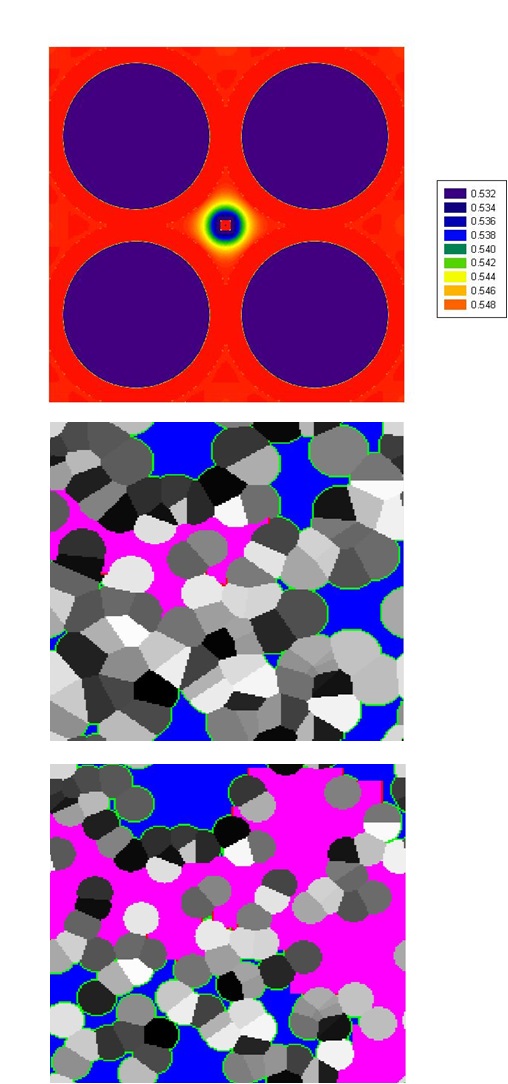People and Projects
| Micro porosity modeling in Aluminum castings | Savithri Sivaraman,with Roschen Sasikumar and Elizabeth Jacob |
|
Background : Interdendritic porosity is one of the problems that deteriorate the quality of cast products. In order to be in a position to control porosity, it is essential to understand the process of porosity formation and identify the critical factors contributing to it. Most of the criteria functions that predict whether a casting location will have microporosity or not have been developed for steels and are not applicable to Al-Si alloys, especially those with long freezing ranges. A combination of experimental and modeling techniques are followed to study microporosity formation in these alloys. Transparent model experiments were conducted to make in-situ observations of how pores nucleate and grow within a solidifying region. It was found that pores could be initiated only from pre-existing bubbles and that a spherical gas bubble trapped within a growing dendritic network can grow in an elongated manner under the constraint of the dendritic morphology Methods : A cellular automaton simulation model is used as a virtual experimental set up to study the nucleation and growth of hydrogen porosity in solidifying Aluminum castings. The applied cellular automaton model has rules specially adapted for the growth of a gas phase within liquid spaces restricted by solid and tracks the gas-liquid interfaces explicitly on a fine grid. The model assumes that pre-existing microbubbles that contain a non-reactive and insoluble gas like nitrogen serve as nucleation sites for hydrogen porosity. Numerical experiments simulations are performed with a eutectic Al-Si alloy solidifying with different grain sizes and solidification rates. The size of the pre-existing bubble and the microstructural environment in which the bubble finds itself are seen to be critical factors that determine the size and morphology of porosity. Results : CA simulation of bubble nucleation from pre existing bubbles is shown in adjacent figure for Al 4.5%Cu alloy. A distinct transition point for the smaller bubbles where the growth mode changes from quiescent to rapid can be observed and at the same time, the supersaturation in the liquid builds up and then goes down. This transition point can be considered as the point of nucleation. Simulations of pore growth in solidifying melts show that even though solidification rate does have a role in determining pore size, the primary determining factor is the micro structural environment in which the pore is constrained to grow |

|